Features of the choice of a cistern with fittings
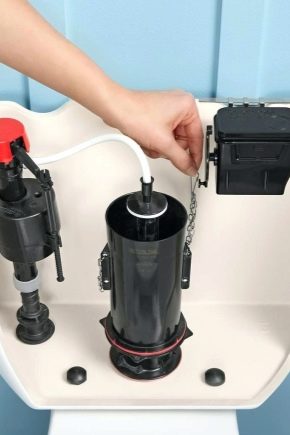
The trends of the modern world are forcing humanity to move forward, improving technologies, increasing the level of comfort in life. Today there is a huge selection of various plumbing fixtures. If you do not understand in advance the varieties and features of the device, you can choose the wrong mechanism or buy a product that may be of poor quality. Especially often this problem concerns the choice of cisterns for the toilet.

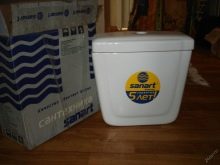
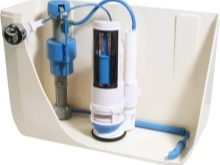
Varieties of toilets
Among the plumbing products presented in stores, you can mainly see models made of ceramics, of various sizes and colors. When choosing the model you like, you should ask the seller about the types of toilets.
They are divided into several types according to the organization of flushing:
- Organization of direct flushing. In this case, the water entering the toilet from the cistern moves straight without changing direction.
- Organization of reverse action water discharge. This option is more functional than the previous principle of operation. But this type produces much more noise during operation.
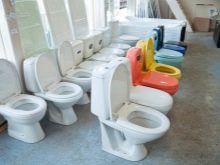
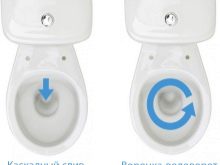
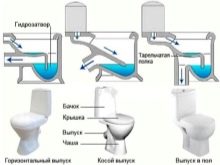
There is one more important aspect that you should pay attention to when choosing a toilet - this is the outlet option. Toilets can be with horizontal, vertical or oblique water outlet. This technical feature should be selected individually, having studied the features of connecting to the sewer network.
The design of the toilet can also vary. There are devices in which the bowl is structurally combined with the flush cistern, or the cistern is located separately from the toilet. In case of a separate arrangement to the toilet, first of all, it is necessary to fix the side table. It is a ceramic plate.
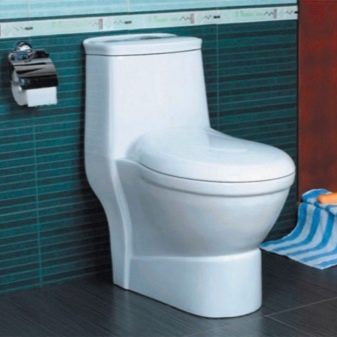
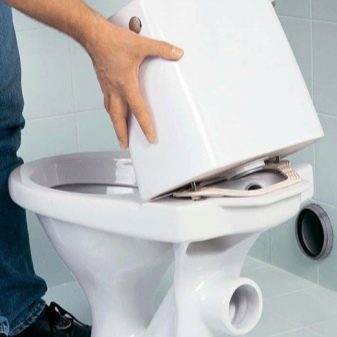
Stem fittings for a toilet bowl drain are the most common and versatile option.
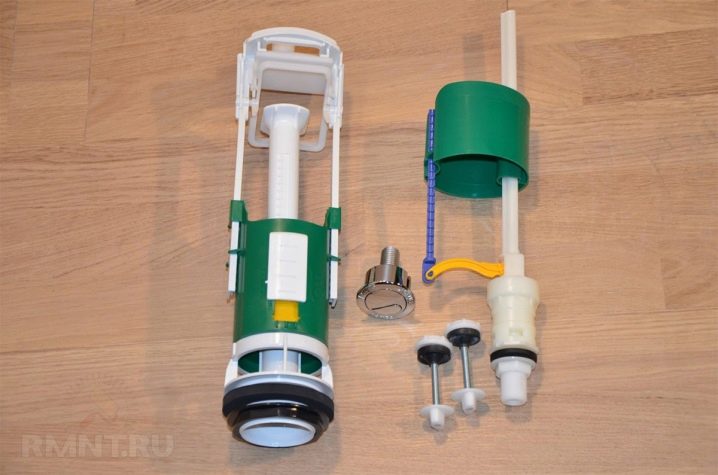
general characteristics
Before paying for the purchase, you must select the type of flush cistern. This is due not only to practical purposes, but also to the aesthetic appearance. In addition, the plumbing design affects the final cost.
When choosing plumbing, the tank of which will be suspended, you will have to incur additional costs. This is influenced by the design of the device itself. It is assumed that the cistern needs to be secured at the required height. Thus, to combine the cistern with the toilet, you will need an additional structure made of a pipe, which will be located against the wall between the cistern and the toilet. In addition, additional materials will be required for the installation of the pipe, and this will lead to additional costs.
The types of cisterns are also worth paying attention to, since each type has special characteristics.
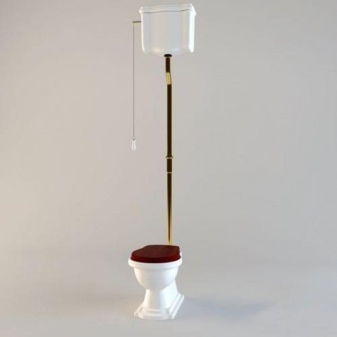
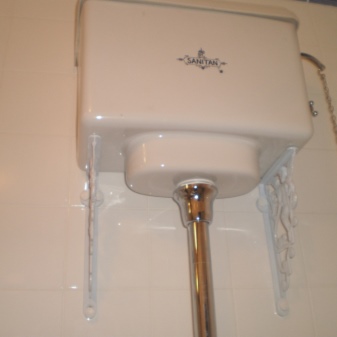
Tank classification:
Wall hanging
This cistern was most widespread in the XX century, during the period of large-scale construction of houses called "Khrushchev". This type of design involves mounting the cistern above the toilet high on the wall. This solution provides a strong flush water pressure due to the installation height.
This model has a drawback. The cistern hanging above the toilet looks extremely unaesthetic. It can be hidden behind a false wall.However, this will require additional cash costs. That is why the model is considered to be outdated.
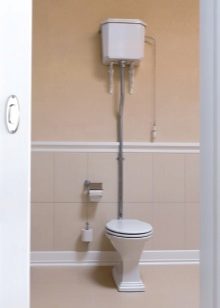
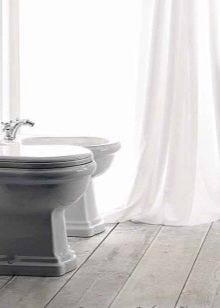
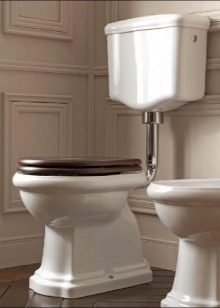
Monoblock or toilet with cistern
It is installed on the toilet seat. This design assumes that the toilet and cistern are one cast structure, or the cistern is mounted on a toilet shelf. This design has been used since the 90s of the twentieth century. It is the most convenient and practical to operate and maintain. If the tank is installed on a shelf, the first thing to do is to secure the gasket. These elements are self-adhesive.
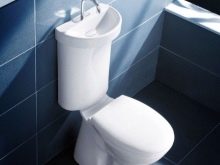

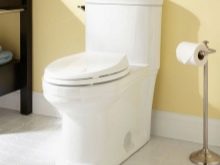
The cistern is fastened directly to the shelf using special bolts. These bolts must have a tapered rubber gasket. The bolts are located inside the tank. When the nuts are tightened, the gaskets will tightly seal the through holes without having to worry about leaks.
Now you need to fix the cistern itself to the toilet shelf. To do this, you need to align the holes in the tank with the holes in the shelf, and then tighten the tightening nuts.
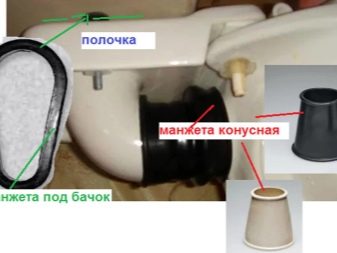

Built in
This design is gaining popularity. It is actually a plastic container mounted behind a false wall with attachment to a concrete wall or to a special rigid frame that is installed additionally if the strength of the wall is insufficient. Fastening is carried out to the wall and floor, which indicates sufficient reliability. This design is the most aesthetic, but it has drawbacks in the form of the need for a false wall and, as a consequence, difficulties in repair.
Since the flush cistern itself is located inside the false wall, only the flush button is displayed on the front surface of the wall. If necessary, access to the internal components of the tank is possible only through this button. Therefore, the manufactured fittings are reliable in operation.

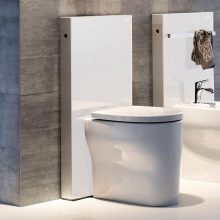
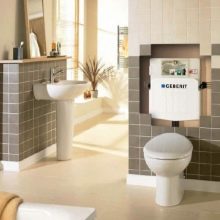
Built-in tanks can be one-button or two-button. In the case of a two-button device, the water is drained by pressing one of the buttons.
The advantages include the ergonomics of the device, the absence of noise when filling with water, the aesthetics of the look and the reliability of the internal elements.
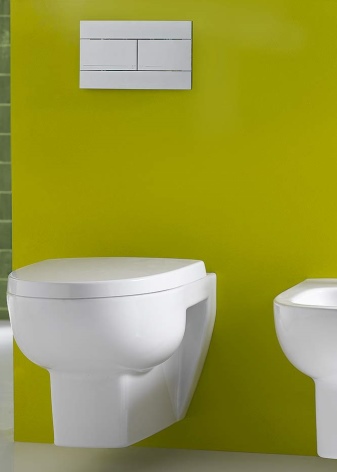
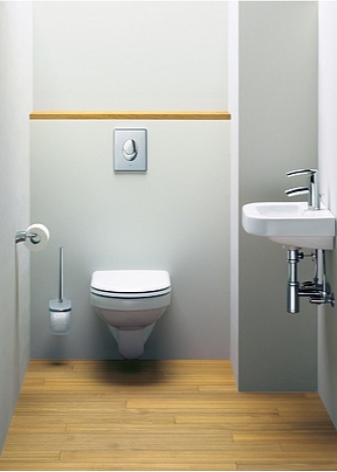
Differences in the type of filling:
Side feed
Water is fed into the container from the side at the top. Very noisy design when filling the tank. The noise can be eliminated by lengthening the water inlet hose.
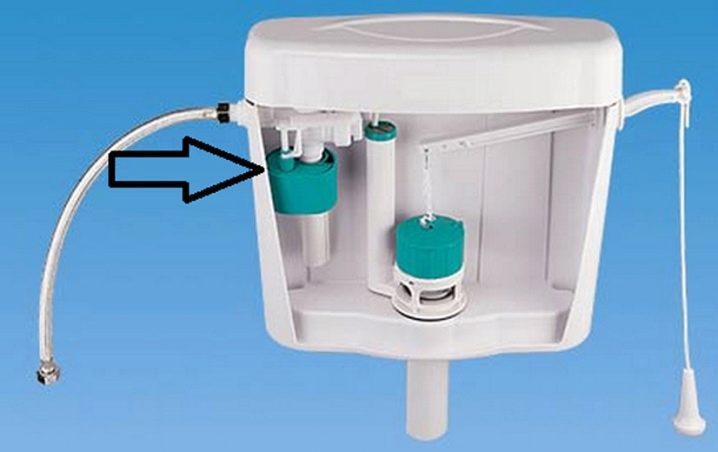
Bottom feed
Water is supplied to the tank from the bottom. This design is silent, but requires careful sealing at the place of the feed mechanism into the tank.
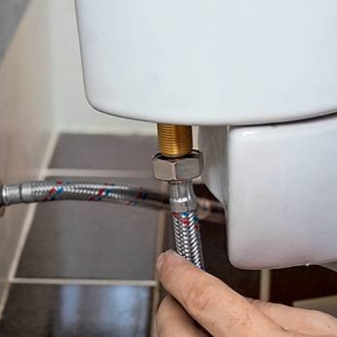
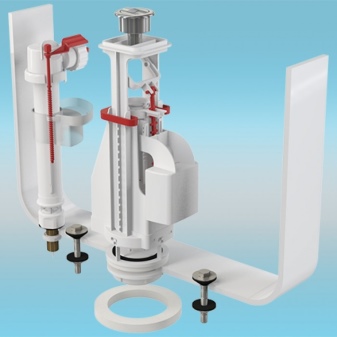
The drain fittings are the same for both types and do not depend on the method of water supply.

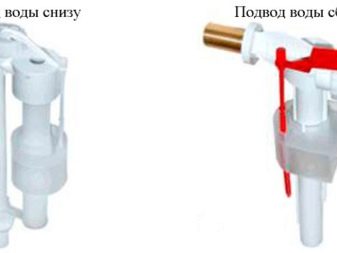
Reinforcement types
When choosing a flush cistern, you should pay attention to some features:
- the volume of the tank itself;
- the location of the filler valve through which the water is supplied.


If the supply valve is located on the top of the tank, then it is possible to mount the shut-off device on the already mounted tank. If the location of the inlet valve is at the bottom, then it is much more convenient to install the tank fittings before attaching the tank.
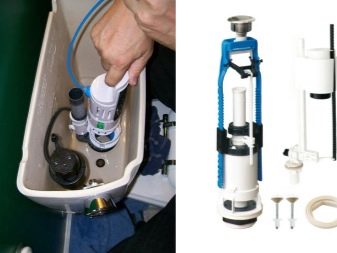

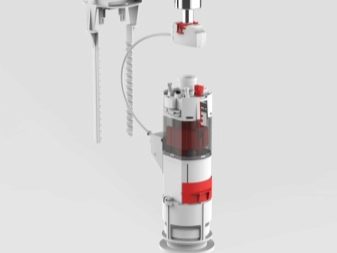
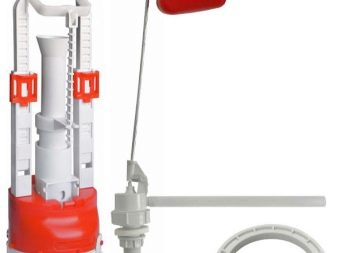
The choice of a repair kit for valves for a flush cistern must be approached responsibly. Since it must be the right fit for your tank, it is important that it ensures that the drain hole is properly opened and sealed when filled with water.
The composition of all cisterns is the same. Stop valves and drain fittings are mandatory. Thanks to the coordinated actions of these mechanisms, water is alternately drained into the toilet and then collected from the water supply network.
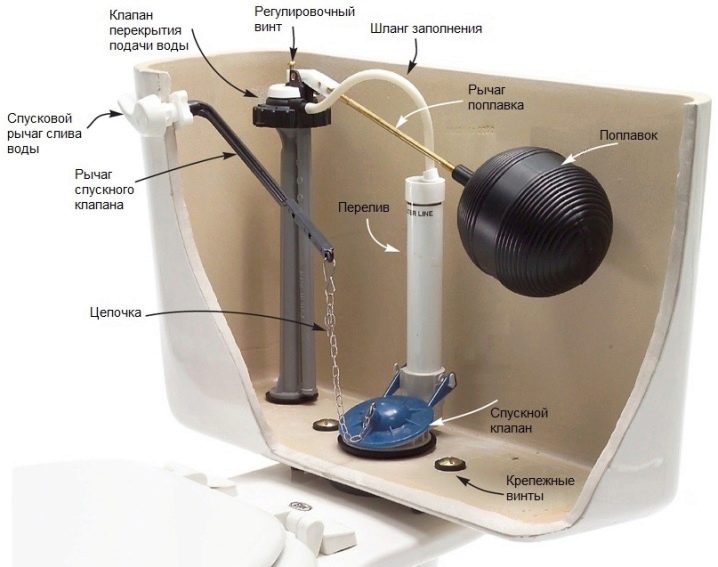
Each of the types of fittings has a number of features:
Shut-off valves
The function of this design is to ensure that the tank is filled with water to the required level. After filling, it provides a water seal with a special closing valve.
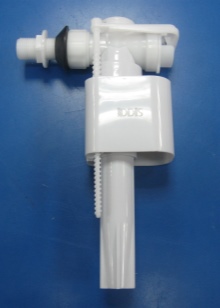
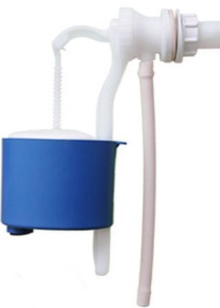
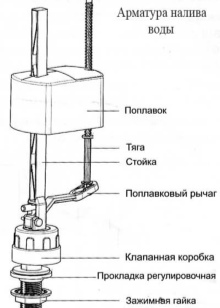
Drain fittings
The purpose of the flush fitting, as the name implies, is to drain water into the toilet by pressing a button, lever, or lifting a handle. After draining the water, the design of the drain fittings ensures that the tank outlet is tightly closed by a valve mechanism, which excludes possible water leaks into the toilet when it is filled.
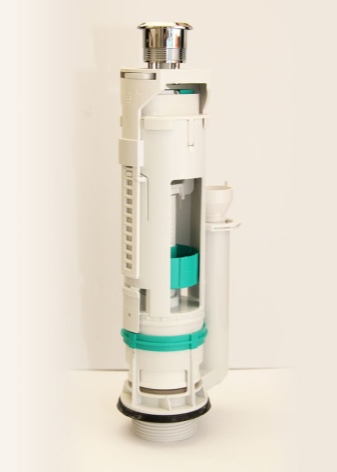
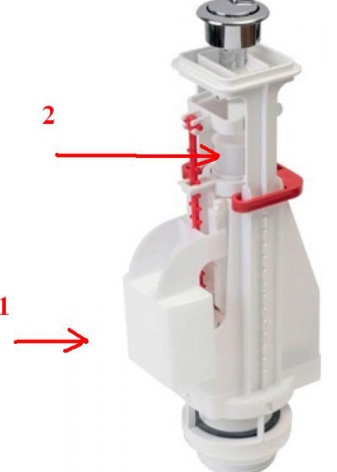
Functionally, shut-off and drain fittings are combined into one whole and represent a combination of the following elements:
- Drain or valve mechanism. It drains water into the toilet and is activated by pressing a button or flush lever.
- The float mechanism is directly connected to the drain mechanism. Serves to regulate the water supply when filling the tank.
- The tap or valve for filling the tank with water is connected to the float mechanism. It opens and closes the water supply to the tank.
- The lever system is used to combine the drain and float mechanisms.
- Rubber or polypropylene gaskets seal the installation areas of the main elements of the system.
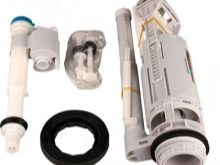
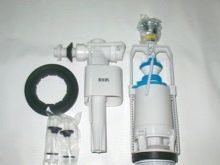

The toilet cistern is very easy to fill with water. Water comes from the water supply network through a hose, which is connected to the tank using a supply valve. A closed container float made of foam or plastic is also connected to this valve through a rod. Under the action of water (its collection or drain), the float has the ability to move up and down.
As the tank fills with water, the float valve rises with the upper water level and closes the supply valve. In the upper position of the valve, when the tank is completely filled with water, the valve shuts off the water. During draining, the float valve drops along with the water level. At the same time, the supply valve opens, and water begins to fill the tank through it.
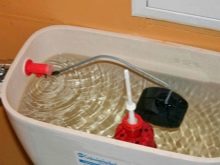
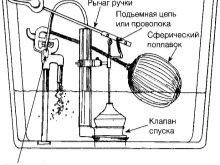
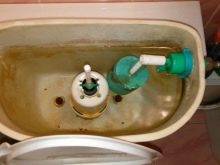
By the way of draining, mechanisms are divided into two types:
Rod
A vertical stem that closes the drain hole is connected to a handle located on the surface of the tank lid. The mechanism is driven by lifting the handle, with which the stem rises and releases the drain hole.
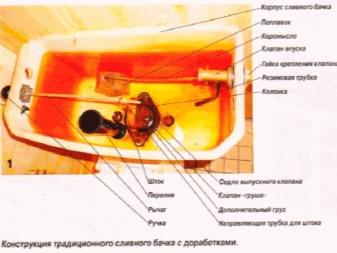
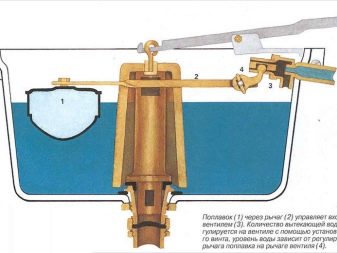
Push-button mechanism
It comes in a number of models:
- with one mode - full drainage of water;
- with two modes - partial drainage and full drainage of water;
- drain interruption mode, in which it is possible to interrupt the drain and unblock it.
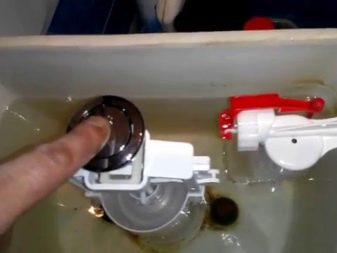
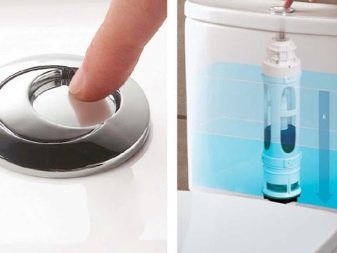
The principle of the drain is no less simple than the filling. By raising the stem or pressing a button (lever), the mechanism lifts the valve that closes the drain hole, and water flows into the toilet.
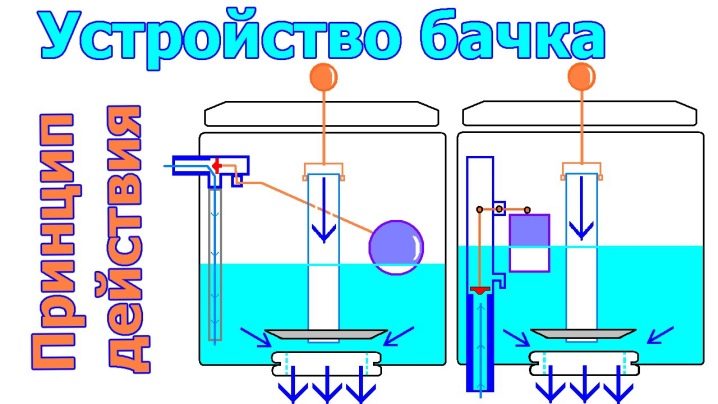
Valves
There are several types of valves:
- Croydon valve. It contains elements such as a saddle, lever, float lever. From the movement of the lever, the piston moves vertically. A similar design is found in outdated cistern models.
- Piston valve - the most widespread design. Here the lever is fixed in a split pin that is flattened in two. The lever moves the piston, which moves horizontally. The piston itself has a gasket. At the moment the piston comes into contact with the seat, the gasket shuts off the water supply.

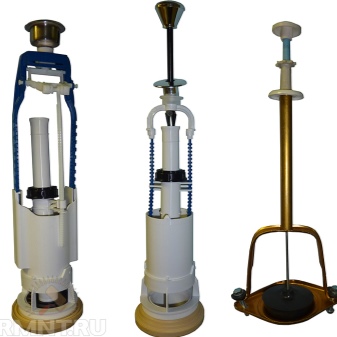
- Diaphragm valve. In this design, a diaphragm is installed on the piston instead of a gasket. When the piston moves, the diaphragm (diaphragm valve) blocks the water inlet. This design is much more efficient and more reliable to block water without leaks, but it has a significant drawback, which is fragility. But the manifestation of this disadvantage significantly depends on the quality and composition of tap water.
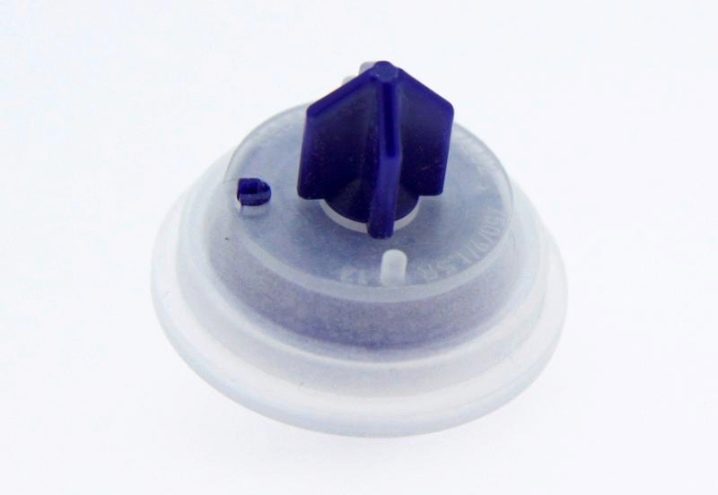
Features of choice
When choosing a flush cistern, special attention is paid to the design features of its insides. The fittings - both drain and shut-off - must be made of high quality materials. In no case is the use of steel materials allowed in the manufacture.Steel in water is susceptible to corrosion, so the life of the steel elements will be very limited.
It is more advisable to choose plastic components and mechanisms for the internal systems of the cistern. Sealing and sealing membranes should be made of flexible and quality materials such as rubber or polypropylene.
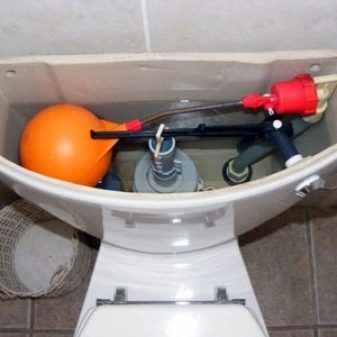

As for the type of drain tank, you need to focus on personal preferences when choosing. It is necessary to take into account such a nuance that wall containers are outdated for a long time. The simplest and most affordable option for maintenance is a candy bar or a toilet with an attached cistern. Built-in models or floor-standing toilets with installation, the filling tank of which is installed inside the wall, are also reliable and have wide application.

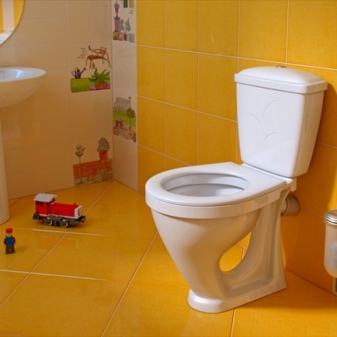
What to consider when installing?
The installation of the cistern should be carried out only after the toilet is installed, secured and connected to the sewer network. Before installing the tank, it is necessary to check the completeness of the fastening elements of the tank itself, as well as the elements of the drain and shut-off valves. All parts must be of high quality, without visible damage and in sufficient quantity.
The supply of water to the tank is possible both in a rigid way and in a flexible way. For the hard method, a water pipe is used. The flexible method involves connecting the water supply network to the tank through a hose. This method is the most convenient and practical for use. This is due to the fact that any damage or displacement of the pipe can cause depressurization of the joint with the tank and the occurrence of leaks.
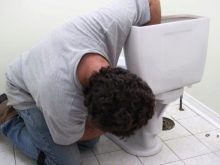
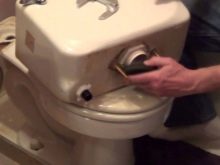
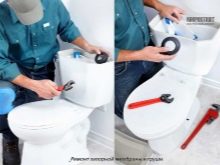
After installing the plumbing fixture, it is necessary to adjust the fittings. Check the operation of all components to avoid possible leaks or overflows during operation.
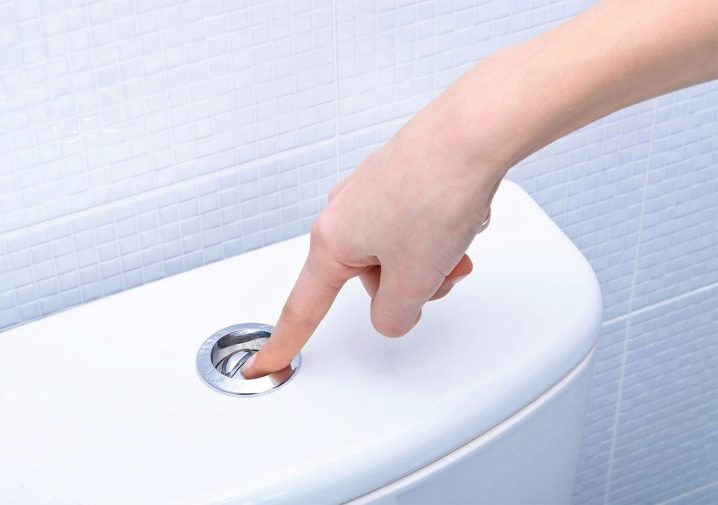
Replacing parts
Plumbing stores usually offer flush cisterns with internal fittings already installed and a complete set of mountings. Therefore, the buyer only has to install the plumbing fixture and start using it. Many do not even think about what mechanisms function inside the tank, and how its work is carried out. But over time, the mechanisms begin to malfunction, and the user has to understand the features of the device in order to repair and purchase new parts.
The main problem when buying spare parts is not their lack, but their quality. Only high-quality repair kit products ensure the long-term functioning of the cistern. Low-quality components can lead to unpleasant breakdowns. For example, regular leaks through the cistern's drain hole lead to overconsumption of water, as well as to stains on the snow-white surface of the toilet.
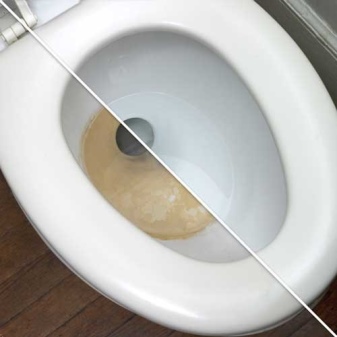

In the event of a breakdown in the mechanisms of the drain tank, you must call a specialist. Payment for the work of a plumber varies depending on the complexity and volume of work. You can try to figure out the breakdown yourself and repair the device yourself. To do this, you need to buy the necessary spare parts and use the instructions.
There are a number of common problems and solutions.
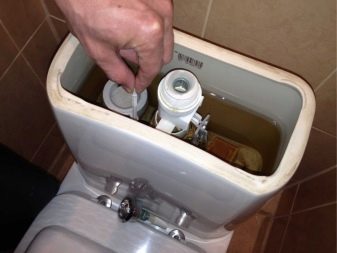
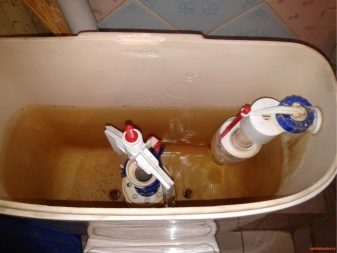
The constant filling of the tank with water can be explained by the following reasons:
- Supply valve worn. In this case, a complete replacement of the assembly is required.
- Curvature of the spokes (rod) of the float. You want to align or replace a part.
- Damage to the float, in which it loses its tightness and water seeps inside. Float replacement required.
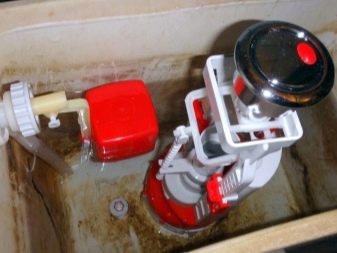
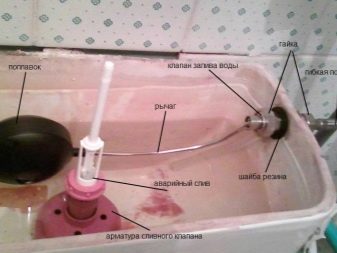
If water drips from the bottom of the toilet, the cause may be a damaged or worn bolt. Their complete replacement will be required. Better to change the elements to bronze or brass as they will not rust.
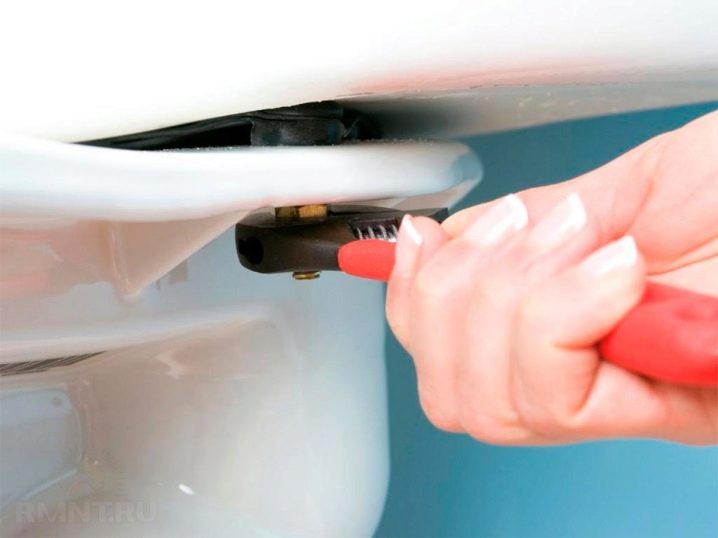
Water runs down the toilet all the time for the following reasons:
- The problem could be diaphragm wear. A complete replacement will be required. To do this, you need to remove the siphon and install a new membrane, after which you need to put the siphon in place.
- Damage to the float mechanism could also be a problem. Its adjustment is required. In the correct position of the float mechanism, the water in the shut-off valve is shut off at least 2 centimeters from the edge of the tank.
- If water flows at the place where the water supply network is connected, then the rubber band has worn out - a gasket at the point of connection of the network. Its replacement is required.
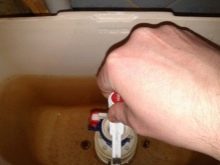

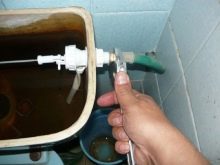
Reasons why the water does not fill or fills slowly:
- Most likely, the problem is the wear of the intake valve. Its replacement is required.
- The problem may be a blockage in the hose. It needs cleaning.

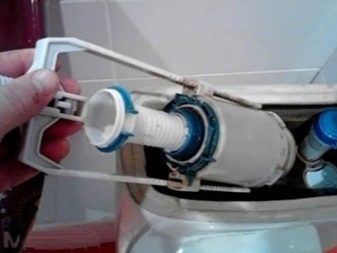
Sometimes it is necessary to replace all the fittings of the cistern. This is done when the replacement of one part is not advisable due to the high wear of all parts and their possible breakdown. Such work includes replacing the old-style drain.
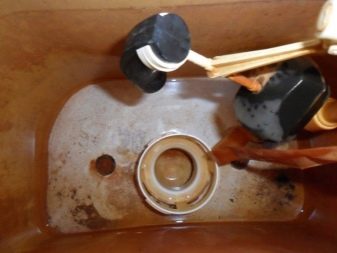
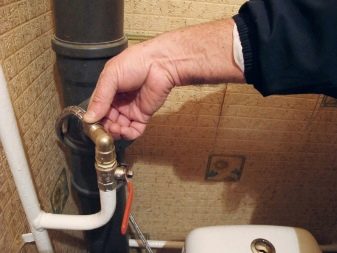
In this case, the procedure will be as follows:
- close the tap of the water supply network and drain the water from the tank;
- remove the tank lid by removing the button or handle;
- unscrew the network hose;
- remove the fittings of the drain column (depending on its type, fasteners may be different), turning it 90 degrees;
- remove the toilet mountings and the toilet itself;
- remove all fasteners of the remaining fittings and remove the fittings;
- install new fittings in reverse order.
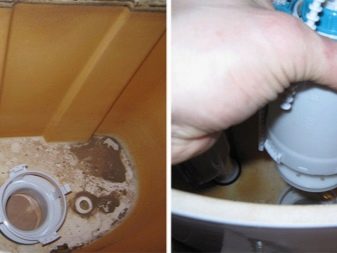
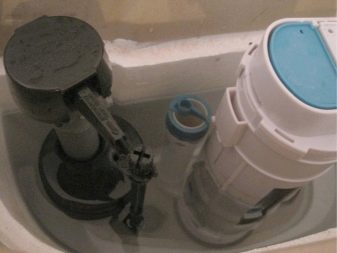
In the event of a leak at the connection point of the water supply network near the built-in tank, it will be necessary to dismantle the lining of the toilet installation. Therefore, during the initial installation of devices, work should be taken very carefully.
The prices for components for the internal components of the cistern may vary depending on the manufacturer, the quality of the materials and the store margin. Therefore, compare the cost of parts before purchasing.
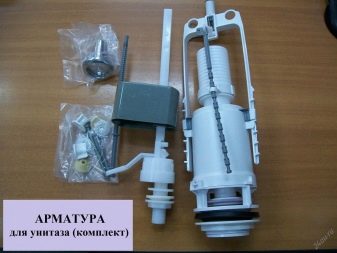
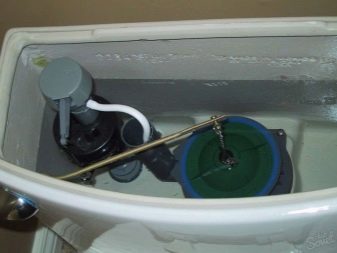
For how to replace and adjust the fittings of the toilet bowl (drain) with your own hands, see the video below.













The comment was sent successfully.